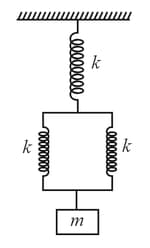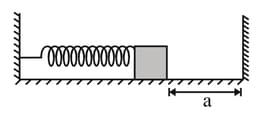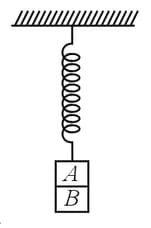Embibe Experts Solutions for Exercise 3: EXERCISE 13.3
Embibe Experts Physics Solutions for Exercise - Embibe Experts Solutions for Exercise 3: EXERCISE 13.3
Attempt the free practice questions from Exercise 3: EXERCISE 13.3 with hints and solutions to strengthen your understanding. Gamma Question Bank for Engineering Physics solutions are prepared by Experienced Embibe Experts.
Questions from Embibe Experts Solutions for Exercise 3: EXERCISE 13.3 with Hints & Solutions
Time period of the block in the shown system is

Two particles and of equal masses are suspended from two massless springs of spring constants and , respectively. If the maximum velocities, during oscillations are equal, the ratio of amplitudes of and is
One end of a spring of force constant is fixed to a vertical wall and the other end is connected to a block of mass resting on a smooth horizontal surface as shown. The spring is now compressed by and released. The time after which the block will strike the other wall is

A block having mass is placed on a horizontal frictionless plane. Another block having same mass is placed on it and is connected to a spring of spring constant The two blocks are pulled by a distance and released. Block oscillates without slipping. The maximum value of frictional force between two blocks is
Two blocks and of masses and respectively are stuck to each other by some weak glue as shown is the figure. They hang together at end of a spring with a spring constant . The block suddenly falls free due to failure of glue.

Find
(i) Period of SHM of block
(ii) Amplitude of its SHM of block
(iii) Total energy of oscillation
A mass is suspended from a spring of negligible mass. The spring is pulled a little and then released, so that, the mass executes SHM of the time period . If the mass is increased by , the time period becomes . Then the ratio of is,
